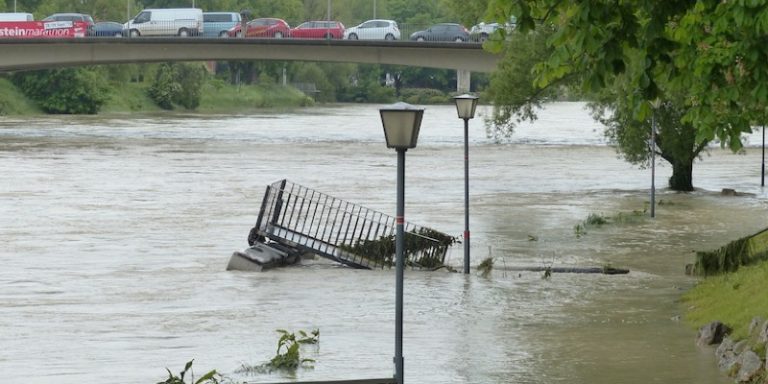
Thawing, differences in ground level, the amount of water received and its flow rate: these are three of the variables that come into play in floods, making this phenomenon very difficult to anticipate. All the more so when it comes to warning the population of the danger it could represent and informing them of the possible areas affected. A team of researchers from Tohoku University in Japan has developed a platform using artificial intelligence to quickly identify potential flooded buildings.
A study on floods and media photographs
In a paper published on April 5, Genki Odaka, Luis Moya, Erick Mas and Shunichi Koshimura, all four researchers from Tohoku University, highlighted their research to identify the extent of flooding and affected buildings. Behind their willingness to study this phenomenon are two objectives:
- propose a concrete response to adapt to disasters, such as setting up rescue operations,
- and analyze the slightest risk of future flooding to try to predict its arrival.
The scientists created a machine learning model capable of using photographs taken by the media to accurately identify which buildings are flooded within 24 hours of the start of the flood. With this model, experts were able to demonstrate that rapid media reports are critical to determining flood zones and accurately mapping damage.
A supervised learning model
This model was tested during a flooding event due to heavy rainfall in Kurashiki, Japan. First, the researchers identified photos published in the press and geolocated them based on landmarks and other clues in the image. They then used synthetic aperture radar images, provided by the Japan Aerospace Exploration Agency (JAXA), to highlight flooded and non-flooded areas. Finally, supervised learning was used so that a support vector machine could classify the buildings into two categories: “flooded” and “not flooded but located in flooded area”.
The researchers found that information collected and processed in this way within 24 hours of a disaster could classify buildings with an accuracy of about 80%. This study highlighted the usefulness of machine learning methods and more specifically supervised learning methods.
The relevance of this model lies in the data sets used to train the model. As previously mentioned, floods are and remain unpredictable phenomena. Each episode is different, and will be subject to the multiple variables that make up the floods, but also to the geographical characteristics of the flooded area. Hence the growing interest in obtaining photographs of floods taken by social network users or by the media.
Translated from Des chercheurs utilisent un modèle basé sur l’apprentissage supervisé pour mieux gérer les inondations









